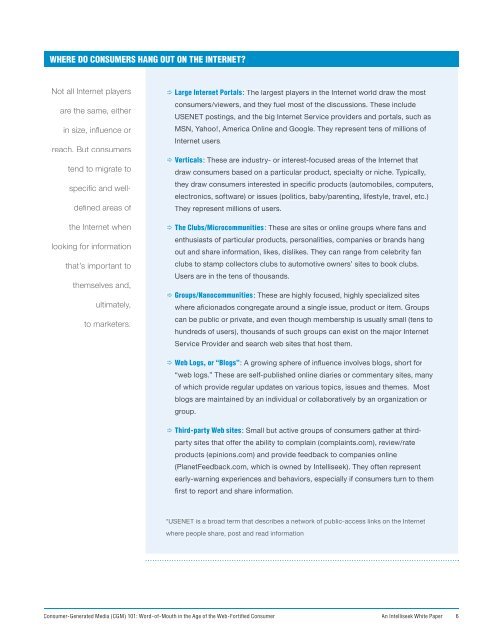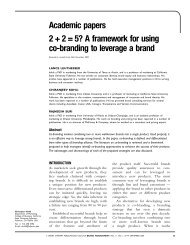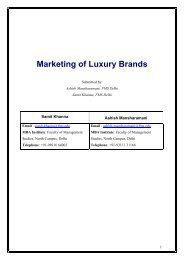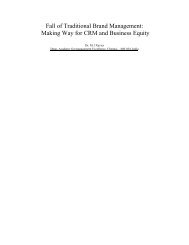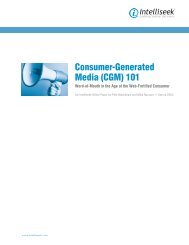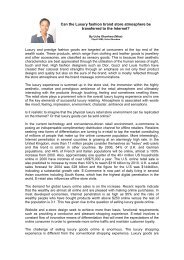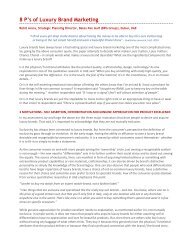Consumer-Generated Media (CGM) 101 - Brandchannel
Consumer-Generated Media (CGM) 101 - Brandchannel
Consumer-Generated Media (CGM) 101 - Brandchannel
You also want an ePaper? Increase the reach of your titles
YUMPU automatically turns print PDFs into web optimized ePapers that Google loves.
WHERE DO CONSUMERS HANG OUT ON THE INTERNET?<br />
Not all Internet players<br />
are the same, either<br />
in size, infl uence or<br />
reach. But consumers<br />
tend to migrate to<br />
specifi c and well-<br />
defi ned areas of<br />
the Internet when<br />
looking for information<br />
that’s important to<br />
themselves and,<br />
ultimately,<br />
to marketers.<br />
ð Large Internet Portals: The largest players in the Internet world draw the most<br />
consumers/viewers, and they fuel most of the discussions. These include<br />
USENET postings, and the big Internet Service providers and portals, such as<br />
MSN, Yahoo!, America Online and Google. They represent tens of millions of<br />
Internet users.<br />
ð Verticals: These are industry- or interest-focused areas of the Internet that<br />
draw consumers based on a particular product, specialty or niche. Typically,<br />
they draw consumers interested in specifi c products (automobiles, computers,<br />
electronics, software) or issues (politics, baby/parenting, lifestyle, travel, etc.)<br />
They represent millions of users.<br />
ð The Clubs/Microcommunities: These are sites or online groups where fans and<br />
enthusiasts of particular products, personalities, companies or brands hang<br />
out and share information, likes, dislikes. They can range from celebrity fan<br />
clubs to stamp collectors clubs to automotive owners’ sites to book clubs.<br />
Users are in the tens of thousands.<br />
ð Groups/Nanocommunities: These are highly focused, highly specialized sites<br />
where afi cionados congregate around a single issue, product or item. Groups<br />
can be public or private, and even though membership is usually small (tens to<br />
hundreds of users), thousands of such groups can exist on the major Internet<br />
Service Provider and search web sites that host them.<br />
ð Web Logs, or “Blogs”: A growing sphere of infl uence involves blogs, short for<br />
“web logs.” These are self-published online diaries or commentary sites, many<br />
of which provide regular updates on various topics, issues and themes. Most<br />
blogs are maintained by an individual or collaboratively by an organization or<br />
group.<br />
ð Third-party Web sites: Small but active groups of consumers gather at third-<br />
party sites that offer the ability to complain (complaints.com), review/rate<br />
products (epinions.com) and provide feedback to companies online<br />
(PlanetFeedback.com, which is owned by Intelliseek). They often represent<br />
early-warning experiences and behaviors, especially if consumers turn to them<br />
fi rst to report and share information.<br />
*USENET is a broad term that describes a network of public-access links on the Internet<br />
where people share, post and read information<br />
<strong>Consumer</strong>-<strong>Generated</strong> <strong>Media</strong> (<strong>CGM</strong>) <strong>101</strong>: Word-of-Mouth in the Age of the Web-Fortifi ed <strong>Consumer</strong> An Intelliseek White Paper 6


